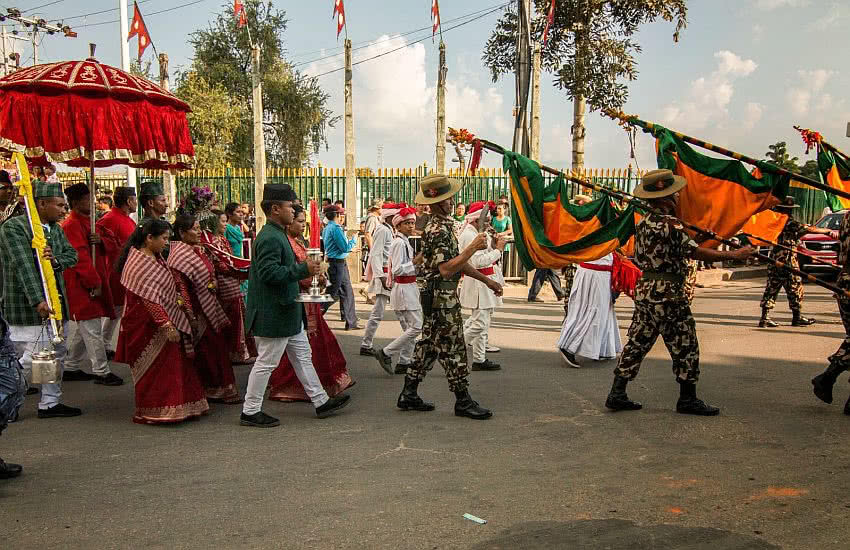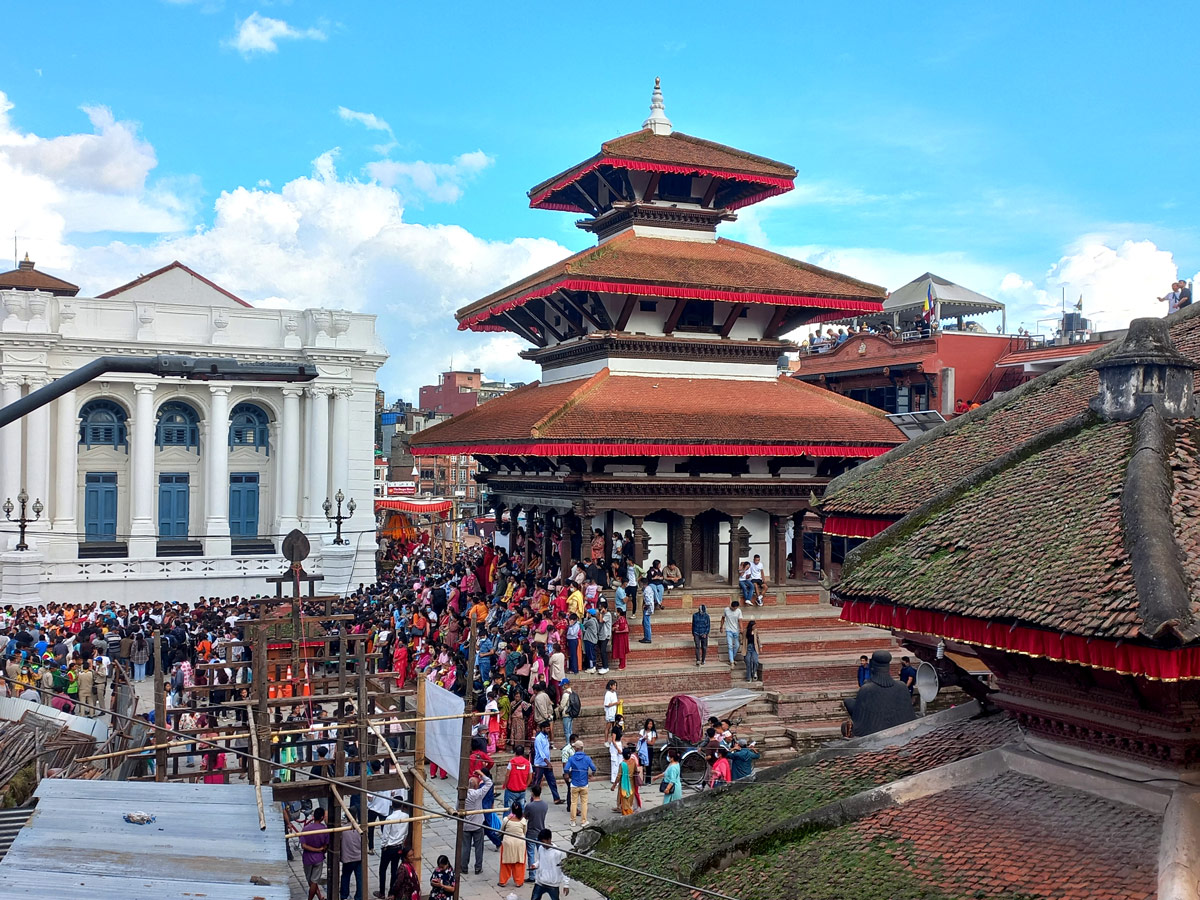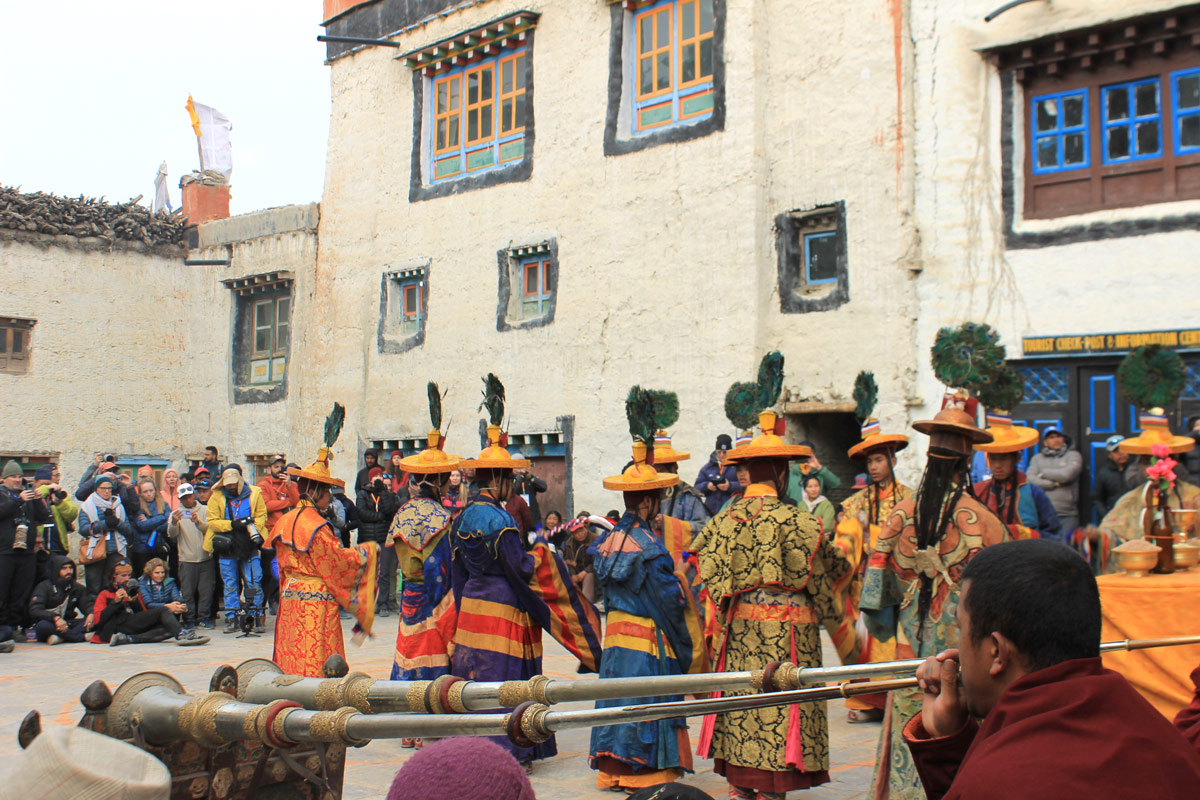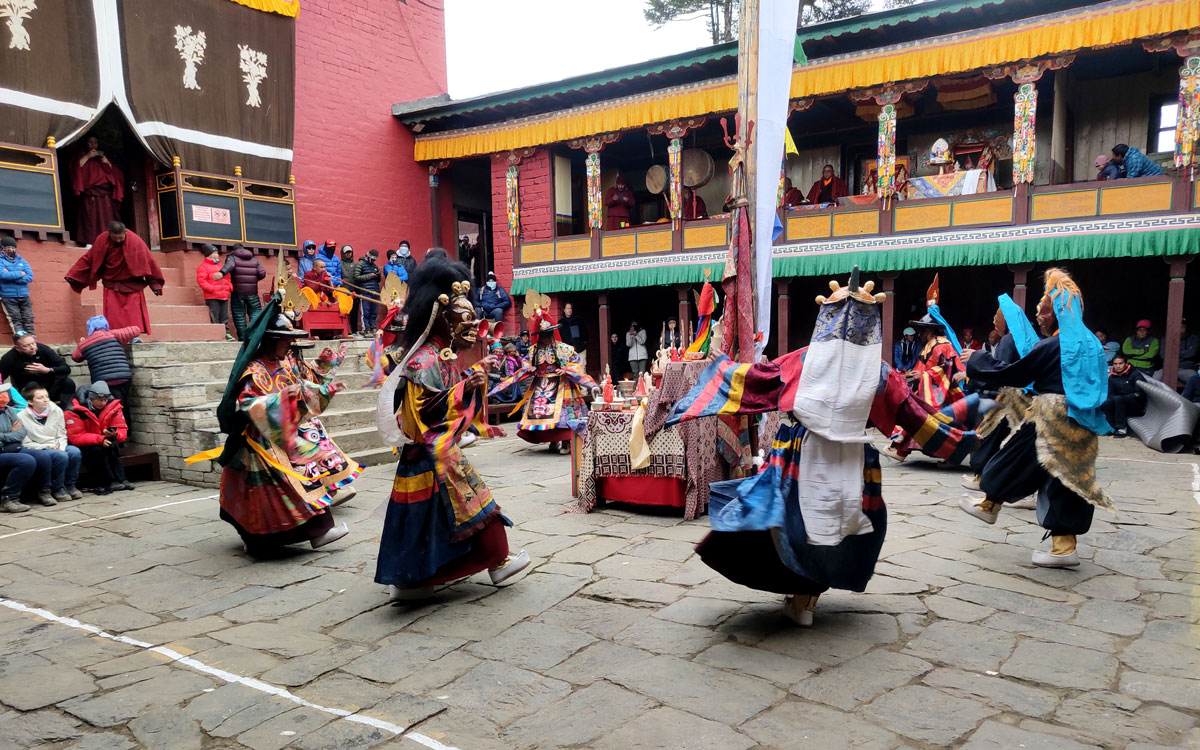The wet spell of monsoon has given way to a slightly chilly but sunny Autumn. In Kathmandu, the days are warm with just a nip in the air, and the blue skies are filled with colourful kites (changas). Once again the season of festival is here and Kathmandu and the rest of Nepal are busy preparing for the two biggest festivals, Dashain and Tihar.
Celebrated by Hindus, Dashain and Tihar festivities lasts for several days. While Dashain is a celebration of victory of good over evil, during Tihar the goddess of wealth and prosperity, Goddess Lakshmi, is worshipped. Academic institutions, government offices and business establishments remain closed during this period.
Buses and airports are filled with Nepalese trying to reach home to be with their families at this auspicious time. Those who live outside the country or away from home make it a point to visit their families. Homes are cleaned and painted. New clothes are bought and kitchens are filled with the aromas of delectable items being prepared for the feasts.
If you are a culture buff and are visiting Nepal during these festivals, then a local homestay is highly recommended. There’s nothing like celebrating a local festival with a local family. Stay with a local family and join in the festivities. Nepalese are generally warm, friendly and hospitable and you will be treated like family.
Dashain celebrates the victory of good over evil. It marks the battle waged between the gods and the demons or asuras, and the ultimate victory of the gods with the slaying of the demon king Mahisasur by Goddess Durga. The nine days of the festival marks the nine days of the battle. The tenth day or Bijaya Dashami celebrates the slaying of the demon king by Goddess Durga.
Fulpati
Although Dashain begins with Ghatasthapana (September 21st), the real festivities begin with ‘Fulpati’, the ceremonial placing of the nine goddesses (represented by nine plants) inside the house. In Kathmandu, Brahmins bring the ‘Fulpati’ offerings from Gorkha.
This custom of bringing Fulpati from Gorkha dates back to the reign of King Prithvi Narayan Shah who came from Gorkha. The Brahmins make the three day journey on foot covering a distance of 169 km. The Fulpati is received by government officials at Jamal and taken to Hanuman Dhoka palace. A programme at Tundikhel is organized by the Nepalese army to mark the installation of ‘Fulpati’ at Hanuman Dhoka.
Maha Ashtami
The eighth day of the festival is dedicated to Goddess Kali, the blood-thirsty and fearsome manifestation of Goddess Durga. To appease her thirst for blood, animal sacrifices are made. A good number of buffaloes, goats, ducks are slaughtered in the name of the goddess.
Navami
On the ninth day, people visit the shrine of Goddess Durga. The doors of Taleju Temple at the Basantapur Durbar Square in Kathmandu is opened for public only on this day. Tools used for making a living and vehicles are also worshipped.
Bijaya Dashami
This day marks the great victory of the gods over the demons. Nepalese celebrate it by visiting their elders with a koseli (offering/gift). The elders bless the younger ones with a ‘tika’ (a mixture of rice, vermilion and yoghurt applied on the forehead) and jamara (sacred grass).
Interested in Nepali culture? Stay with a local family. Local Homestay in a traditional Nepali Village.





